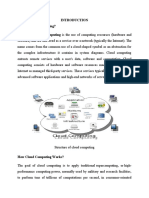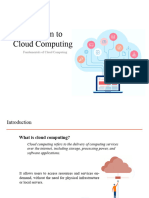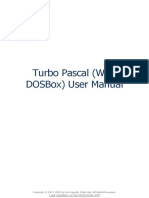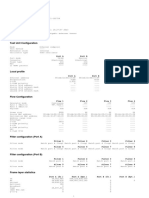0% found this document useful (0 votes)
31 views14 pagesUNIT-I Cloud Computing
The document provides an overview of cloud computing, detailing its definition, historical developments, and the benefits it offers, such as global accessibility, scalability, and cost efficiency. It outlines the various service models (IaaS, PaaS, SaaS) and deployment models (public, private, hybrid, community) that characterize cloud environments. Additionally, it discusses the challenges faced in cloud computing, including security risks and integration issues, while highlighting the evolution of cloud technology from distributed systems to modern AI-driven services.
Uploaded by
Bunny ChokkamCopyright
© © All Rights Reserved
We take content rights seriously. If you suspect this is your content, claim it here.
Available Formats
Download as PDF, TXT or read online on Scribd
0% found this document useful (0 votes)
31 views14 pagesUNIT-I Cloud Computing
The document provides an overview of cloud computing, detailing its definition, historical developments, and the benefits it offers, such as global accessibility, scalability, and cost efficiency. It outlines the various service models (IaaS, PaaS, SaaS) and deployment models (public, private, hybrid, community) that characterize cloud environments. Additionally, it discusses the challenges faced in cloud computing, including security risks and integration issues, while highlighting the evolution of cloud technology from distributed systems to modern AI-driven services.
Uploaded by
Bunny ChokkamCopyright
© © All Rights Reserved
We take content rights seriously. If you suspect this is your content, claim it here.
Available Formats
Download as PDF, TXT or read online on Scribd
/ 14
























































































